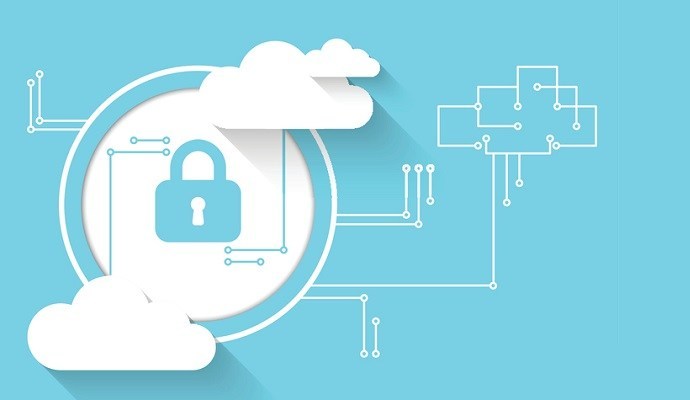Cloud Security and Privacy Concerns
In the modern digital era, cloud computing has become an indispensable part of business and personal data management. Organizations of all sizes, from startups to global corporations, increasingly rely on cloud services to store, manage, and process their data. The cloud offers unparalleled scalability, cost-efficiency, and flexibility, allowing businesses to operate more efficiently and innovate faster. However, with the convenience and benefits of cloud computing come significant security and privacy concerns. As more sensitive information is moved to the cloud, the risk of data breaches, cyber-attacks, and regulatory compliance issues has escalated, making cloud security and privacy a top priority for organizations worldwide.
This article explores the key security and privacy concerns associated with cloud computing, delves into the most common threats and vulnerabilities, and provides strategies for mitigating these risks to ensure that data stored in the cloud remains secure and private.
Understanding Cloud Security
Cloud security refers to the measures, technologies, and policies that protect cloud-based systems, data, and infrastructure from various cyber threats. These measures include a combination of tools, processes, and practices designed to safeguard the integrity, confidentiality, and availability of data stored in the cloud.
Cloud security is a shared responsibility between cloud service providers (CSPs) and customers. CSPs are responsible for securing the cloud infrastructure, including the physical servers, storage, and networking equipment. Customers, on the other hand, are responsible for securing the data they store and process in the cloud, including managing access controls, encryption, and monitoring for potential threats.
Key Cloud Security Concerns
- Data Breaches
Data breaches are one of the most significant cloud security concerns. When sensitive data stored in the cloud is accessed or disclosed without authorization, it can lead to financial losses, reputational damage, and legal consequences for organizations. Data breaches can occur due to various reasons, including weak access controls, inadequate encryption, and vulnerabilities in the cloud infrastructure.
- Insider Threats
Insider threats refer to malicious actions taken by individuals within an organization, such as employees, contractors, or business partners, who have access to sensitive data stored in the cloud. These threats can be intentional, such as a disgruntled employee leaking confidential information, or unintentional, such as an employee accidentally misconfiguring a cloud resource and exposing data to unauthorized users.
- Data Loss
Data loss in the cloud can occur due to accidental deletion, hardware failures, or malicious attacks such as ransomware. When data is lost, it can be challenging to recover, especially if proper backup and disaster recovery measures are not in place. Data loss can disrupt business operations, lead to financial losses, and result in the permanent loss of critical information.
- Insufficient Identity and Access Management (IAM)
Identity and access management (IAM) is crucial for controlling who has access to cloud resources and data. Insufficient IAM practices, such as weak passwords, lack of multi-factor authentication, and improper role-based access controls, can lead to unauthorized access and data breaches. Effective IAM is essential for ensuring that only authorized users can access sensitive data in the cloud.
- Insecure APIs and Interfaces
Cloud services often rely on application programming interfaces (APIs) and interfaces for communication and integration with other systems. Insecure APIs and interfaces can be exploited by attackers to gain unauthorized access to cloud resources and data. Ensuring that APIs and interfaces are secure is critical for maintaining cloud security.
- Compliance and Legal Risks
Organizations that store sensitive data in the cloud must comply with various regulatory requirements, such as the General Data Protection Regulation (GDPR), the Health Insurance Portability and Accountability Act (HIPAA), and the Payment Card Industry Data Security Standard (PCI DSS). Failure to comply with these regulations can result in significant fines, legal actions, and reputational damage. Ensuring that cloud services meet regulatory requirements is a crucial aspect of cloud security.

Understanding Cloud Privacy
Cloud privacy refers to the protection of personal and sensitive information stored in the cloud from unauthorized access, disclosure, and misuse. Privacy concerns in the cloud are closely related to security concerns, as both are focused on protecting data. However, privacy specifically emphasizes the protection of individuals’ personal information and ensuring that it is collected, stored, and processed in compliance with relevant data protection laws and regulations.
Key Cloud Privacy Concerns
- Data Ownership and Control
One of the primary privacy concerns in the cloud is the issue of data ownership and control. When organizations store data in the cloud, they may lose direct control over that data, as it is managed by the cloud service provider. This loss of control can raise concerns about how the data is being used, who has access to it, and whether it is being shared with third parties without the organization’s knowledge or consent.
- Data Sovereignty
Data sovereignty refers to the concept that data is subject to the laws and regulations of the country in which it is stored. When data is stored in the cloud, it may be hosted on servers located in different countries, each with its data protection laws. This can create privacy challenges, as organizations must ensure that their data is compliant with the relevant laws and regulations of each country where it is stored.
- Data Retention and Deletion
Cloud service providers often have data retention policies that specify how long data is stored and when it is deleted. Privacy concerns arise when organizations are unsure about how long their data will be retained or whether it will be permanently deleted when no longer needed. Ensuring that data is deleted according to an organization’s retention policies is essential for maintaining privacy.
- Third-Party Access
Cloud service providers may share data with third parties, such as subcontractors, partners, or government agencies, for various reasons, including legal compliance, service improvement, or data analysis. Privacy concerns arise when organizations are not fully aware of who has access to their data and how it is being used. It is crucial for organizations to have transparency into third-party access to their data and to ensure that appropriate privacy safeguards are in place.
- Data Encryption and Anonymization
Encrypting and anonymizing data are essential privacy measures that protect sensitive information from unauthorized access. However, if data is not properly encrypted or anonymized in the cloud, it can be vulnerable to breaches and misuse. Ensuring that data is encrypted both at rest and in transit and that anonymization techniques are applied where necessary is critical for maintaining privacy in the cloud.
- Compliance with Data Protection Regulations
Privacy concerns in the cloud are closely tied to compliance with data protection regulations, such as GDPR, HIPAA, and CCPA. These regulations set strict requirements for how personal data is collected, stored, and processed, and organizations must ensure that their cloud services comply with these requirements. Failure to comply with data protection regulations can result in significant fines, legal actions, and reputational damage.
Revolutionizing Manufacturing: The Role of Robotics in Production
Common Threats and Vulnerabilities in Cloud Security and Privacy
- Phishing Attacks
Phishing attacks are a common threat to cloud security and privacy. Attackers use deceptive emails or websites to trick users into providing sensitive information, such as login credentials or financial information. Once attackers gain access to cloud accounts, they can steal data, deploy ransomware, or engage in other malicious activities.
- Malware and Ransomware
Malware and ransomware are malicious software programs that can infect cloud environments and compromise data security and privacy. Malware can steal data, disrupt operations, and grant attackers unauthorized access to cloud resources. Ransomware, on the other hand, encrypts data and demands payment in exchange for the decryption key, often resulting in data loss and financial damage.
- Man-in-the-Middle (MitM) Attacks
Man-in-the-middle attacks occur when an attacker intercepts communication between a user and a cloud service, allowing them to eavesdrop, steal data, or manipulate the communication. These attacks can compromise the confidentiality and integrity of data transmitted between users and cloud services.
- DDoS Attacks
Distributed Denial of Service (DDoS) attacks are a common threat to cloud security, in which attackers overwhelm cloud servers with excessive traffic, causing them to crash or become unavailable. DDoS attacks can disrupt business operations, cause data loss, and result in significant financial losses.
- Vulnerabilities in Cloud Infrastructure
Cloud infrastructure vulnerabilities, such as misconfigurations, unpatched software, and insecure network settings, can be exploited by attackers to gain unauthorized access to cloud resources and data. Ensuring that cloud infrastructure is properly configured and regularly updated is essential for maintaining security and privacy.

Strategies for Mitigating Cloud Security and Privacy Risks
- Implement Strong Access Controls
Implementing strong access controls is critical for protecting cloud resources and data. This includes enforcing multi-factor authentication (MFA), using strong and unique passwords, and implementing role-based access controls (RBAC) to ensure that only authorized users have access to sensitive data.
- Encrypt Data at Rest and in Transit
Encrypting data both at rest and in transit is essential for protecting it from unauthorized access. Organizations should use strong encryption algorithms and manage encryption keys securely to ensure that data remains confidential and private.
- Conduct Regular Security Audits and Assessments
Regular security audits and assessments help organizations identify vulnerabilities in their cloud environments and address them before they can be exploited by attackers. These audits should include reviews of access controls, encryption practices, and compliance with data protection regulations.
- Implement a Robust Backup and Disaster Recovery Plan
Having a robust backup and disaster recovery plan is essential for mitigating the risk of data loss in the cloud. Regularly backing up data to secure locations and testing recovery processes can help organizations recover quickly in the event of a data loss incident.
- Educate and Train Employees
Employee education and training are crucial for mitigating insider threats and preventing phishing attacks. Organizations should provide regular training on cloud security best practices, including recognizing phishing attempts.
Robotics in Healthcare and Medicine: Revolutionizing Patient Care and Treatment
Emerging Trends in Cloud Security and Privacy
As cloud computing continues to evolve, several emerging trends are shaping the future of cloud security and privacy. Understanding these trends can help organizations stay ahead of potential risks and adapt their security strategies accordingly.
- Zero Trust Architecture
Zero Trust Architecture (ZTA) is an approach to security that assumes no user or device can be trusted by default, regardless of their location within or outside the network. ZTA emphasizes continuous verification of user identity, device security, and network traffic to ensure that only authorized users and devices can access cloud resources. By implementing ZTA, organizations can enhance their cloud security posture and reduce the risk of data breaches and insider threats.
- AI and Machine Learning in Cloud Security
Artificial Intelligence (AI) and Machine Learning (ML) are increasingly being integrated into cloud security solutions to enhance threat detection and response. AI and ML algorithms can analyze vast amounts of data in real time, identify patterns and anomalies, and detect potential threats more effectively than traditional methods. These technologies can help organizations proactively address security issues, automate incident response, and improve overall security posture.
- Privacy-Enhancing Technologies
Privacy-enhancing technologies (PETs) are designed to protect personal data while enabling its use for various purposes. Examples of PETs include data anonymization, differential privacy, and homomorphic encryption. These technologies can help organizations comply with data protection regulations, mitigate privacy risks, and ensure that personal data is handled securely in the cloud.
- Cloud-Native Security Tools
Cloud-native security tools are specifically designed to address the unique security challenges of cloud environments. These tools are integrated into cloud platforms and provide real-time visibility, automated threat detection, and policy enforcement. Cloud-native security tools can help organizations secure their cloud infrastructure, applications, and data more effectively than traditional security solutions.
- Regulatory Changes and Compliance
Data protection regulations are continually evolving to address new privacy concerns and technological advancements. Organizations must stay informed about changes in regulations and ensure that their cloud services comply with current and upcoming requirements. This includes adapting to regulations such as the California Consumer Privacy Act (CCPA), the General Data Protection Regulation (GDPR), and emerging data protection laws in various jurisdictions.
- Hybrid and Multi-Cloud Environments
Many organizations are adopting hybrid and multi-cloud strategies to leverage the benefits of different cloud providers and avoid vendor lock-in. However, managing security and privacy across multiple cloud environments can be complex. Organizations need to implement consistent security policies, monitor cloud resources across different providers, and ensure that data protection measures are applied uniformly.
- Blockchain for Cloud Security
Blockchain technology, known for its decentralized and immutable nature, is being explored as a means to enhance cloud security and privacy. Blockchain can provide secure and transparent data transactions, improve data integrity, and enable decentralized identity management. As blockchain technology matures, it may offer new solutions for addressing cloud security challenges.
Case Studies and Real-World Examples
Examining real-world examples and case studies can provide valuable insights into cloud security and privacy challenges and solutions. Here are a few notable examples:
- Capital One Data Breach
In 2019, Capital One experienced a significant data breach due to a misconfigured firewall in its cloud environment. The breach exposed the personal information of over 100 million customers, including credit scores and account details. The incident highlighted the importance of proper configuration management and security controls in cloud environments.
- Uber Data Breach
In 2016, Uber suffered a data breach in which the personal information of 57 million users and drivers was stolen. The company initially failed to disclose the breach and only revealed it a year later. The incident underscored the importance of timely incident reporting and transparency in cloud security.
- Facebook-Cambridge Analytica Scandal
The Facebook-Cambridge Analytica scandal involved the unauthorized harvesting of personal data from millions of Facebook users. The incident raised significant privacy concerns and led to increased scrutiny of data protection practices and the use of personal data for targeted advertising.
- AWS S3 Bucket Exposures
Several high-profile incidents have involved publicly exposed Amazon Web Services (AWS) S3 buckets, leading to the exposure of sensitive data. These incidents have highlighted the need for proper access controls and data protection measures when using cloud storage services.

Best Practices for Cloud Security and Privacy
To effectively address cloud security and privacy concerns, organizations should adopt the following best practices:
- Regularly Update and Patch Cloud Resources
Keeping cloud resources, including virtual machines, applications, and databases, up-to-date with the latest security patches is essential for protecting against vulnerabilities and exploits.
- Implement Strong Data Encryption
Use strong encryption standards to protect data both at rest and in transit. Ensure that encryption keys are managed securely and that data is encrypted using industry-standard algorithms.
- Conduct Security Training and Awareness Programs
Provide regular training and awareness programs for employees to educate them about cloud security best practices, phishing prevention, and data protection policies.
- Develop and Test Incident Response Plans
Create and regularly test incident response plans to ensure that your organization is prepared to respond to security incidents effectively. This includes defining roles and responsibilities, communication protocols, and recovery procedures.
- Perform Regular Security Audits and Assessments
Conduct regular security audits and assessments to identify potential vulnerabilities, assess the effectiveness of security controls, and ensure compliance with data protection regulations.
- Adopt a Risk-Based Approach
Take a risk-based approach to cloud security and privacy by identifying and prioritizing the most critical assets and potential threats. Focus on implementing security measures that address the highest risks and provide the greatest protection for sensitive data.
- Work with Reputable Cloud Service Providers
Choose cloud service providers with a strong track record of security and privacy. Evaluate their security practices, certifications, and compliance with data protection regulations before entrusting them with your data.
As cloud computing continues to evolve and become more integral to business operations, addressing security and privacy concerns is paramount. Organizations must stay vigilant and proactive in managing cloud security and privacy risks to protect their sensitive data and maintain trust with customers and stakeholders. By understanding the key concerns, staying informed about emerging trends, and adopting best practices, organizations can navigate the complexities of cloud security and privacy and ensure that their cloud environments remain secure and compliant.
Understanding the Impact of Robotics on the Job Market: What You Need to Know
Cloud security and privacy are dynamic fields that require continuous attention and adaptation. As technology advances and new threats emerge, organizations must be prepared to evolve their security strategies and practices to stay ahead of potential risks and safeguard their data in the cloud.




Post Comment